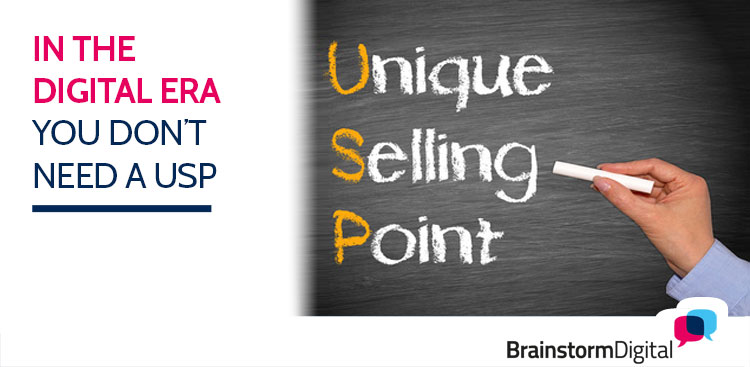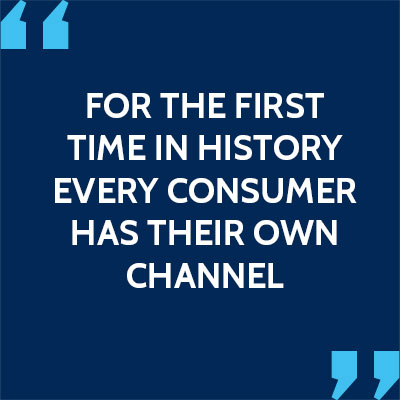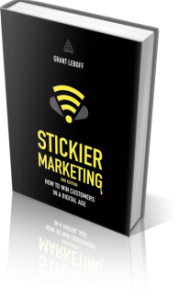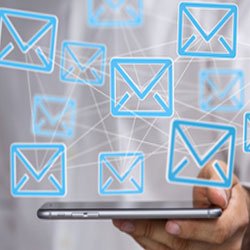 How can businesses build a connection with prospects online?
How can businesses build a connection with prospects online?
How can they use mobile to promote themselves?
And has social media really changed marketing – or is it just another channel?
For the answers to all these questions and more, I spoke to Grant Leboff, one of the UK’s leading marketing experts and author of Stickier Marketing: How to Win Customers in a Digital Age. When it was released in February, the book went straight to #1 in the Amazon Sales & Marketing Chart.
His startling insights include:
- Why businesses no longer need a USP
- The one crucial bit of information you need about your clients (it’s not what you think)
- How to get your own customers to market for you
- How he raised one nightclub’s business by 9% through mobile marketing
- The next steps in the evolution of digital marketing
Enjoy!
One of the most counter-intuitive claims you make is that in a digital age, USPs are no longer important for businesses. Why is this?
Grant Leboff: The USP came from Madison Avenue in 1950s New York, where big advertising agencies were spending fortunes on TV advertising. The idea was that if you were going to shout at people for 30-40 seconds during a commercial break, you needed something unique to attract people to you.
It got widely adopted, and suddenly you have gardeners in Edgware trying to work out their USP, which is ridiculous. If you’re a service-based provider, you don’t have a USP. There’s nothing you can promise that I can’t copy from a marketing point of view. And with today’s speed of communications, there’s nothing a lawyer or accountant can say that can’t be copied as soon as it’s on your website.
For products, a good example is the Apple iPad. It was released in April 2010 and Apple patented every process to do with the technology, yet Samsung released the Galaxy Tab by September. Apple’s advantage came to 25-30 weeks – nothing.
So these days, there’s no such thing as a USP. Whatever feature you have can be copied in seconds.
How, then, can businesses differentiate themselves?
GL: By acknowledging that we have left the product and services economy behind. The web has commoditised service: Amazon delivers a great service, yet you never have to talk to a human being.
Instead, we’ve become an experience economy. The difference between a service and an experience is that a service is done to you, an experience is done with you.
Take a football match. When Manchester United plays Bayern Munich, there’s a sense of occasion that isn’t just delivered by 22 footballers and a referee, but by 60,000 fans. Without them in the stadium, even with all the players and the prize, the sense of occasion wouldn’t be there.
The experience is delivered because you become a part of it.
Businesses need to differentiate themselves by delivering something more 3D. A USP is what you do; an experience is how you do it, and who for.
Give me an example of how a business can do this.
GL: Let’s take a window installer. Can you allow people to bespoke what you do, for example upload a picture of their house and superimpose a picture of windows? They can see what it would look like, then share on Facebook and ask their friends which looks best.
They become your marketers – chances are the friends will want to see what their house will look like too! By being able to upload on a site and share on social media, it becomes an experience. You’re not doing it ‘to’ me but ‘with’ me. It takes the risk of the purchase away.
In your book, you argue that understanding when people purchase has become even more important than knowing who’s purchasing. Why is this?
GL: Why are companies so obsessed with demographics? Historical reasons.
Take Proctor and Gamble. If they advertised their washing powder on ITV, the one thing they definitely knew about their audience was that they weren’t buying washing powder – because they were watching TV.
Companies knew with almost 100% certainty that they’d hit their customers at exactly the wrong moment, so they had to make sure they were hitting the right customer. That’s why they got obsessed with demography.
Today we’re all on our mobile phones, everyone does everything in the moment. More important than demographics is understanding the context in which someone will look for my product or service.
To return to the double-glazing example, no one wakes up and thinks, “I’ll get some windows this afternoon”. There’s an event that drives the purchasing decision. Maybe you’re just moved house and don’t like the windows. Maybe your heating bills are out of control, or you can’t tolerate the noise from the outside.
Once marketers understand the context, it feeds into your marketing messages. On your website, you might have a section for ‘Just moved home’, or top tips on how to reduce noise if you live on a busy road. Suddenly you’re adding real value to your marketing.
It’s important because most customers’ journeys in a web-enabled world are initiated by the customer, not the company. The first point of call 25 years ago when booking a holiday was to go to a travel agency and look at the brochures – the travel companies set the agenda. Today the customer has the initiative.
So has power shifted from the businesses to the consumers?
 GL: It has. The consumer has more choice than ever before, and there’s also more information available.
GL: It has. The consumer has more choice than ever before, and there’s also more information available.
Most people miss the other reason. For the first time in history, every consumer has their own channel. You no longer need a publishing deal to get read – you have blogs, and social media.
That channel changes our relationship with information, which becomes a commodity. You can go on TripAdvisor or Amazon and see what your friends think, and check what films your friends have liked. It’s amazing as a purchaser because it takes the risk out of the purchase.
So the customers themselves play a role in companies’ marketing?
GL: More important than user-generated content is advocacy. If a customer thanks me, the first thing should be to ask, could you tweet about that or write something on LinkedIn? In a world of transparency and social proof, it’s no use unless they say it publicly.
Doesn’t asking for recommendations come across as desperate?
GL: It’s the way it’s done. You can say that if you really liked it, I’d love if you could tell others.
Ask your customers for a video testimonial. At the end of a webinar, ask people to tweet about it. Make sure you have sharing buttons on your social media posts.
It isn’t what we say that counts – it’s what others say about us.
Let’s go back to when a purchase is made. Is this important for all types of businesses, or only some?
GL: All businesses, but more so for location-based businesses.
I work with a nightclub in London. We got 9% uplift in traffic through the door by understanding the context. At 9pm on a Friday night, web visits are from mobile devices. They’re not looking an ‘about us’ page – chances are they’re looking at where they’re going now, what they’re doing next.
If the first thing they see on the website is a pint and it says, ‘Come now, get a free pint’ – it’s a very sticky marketing message. We automated the messaging so that at 9pm, the message changed if it was accessed on a mobile. If you go to the same site at 9am on Monday morning, maybe you’re arranging a hen or a stag-do – you need to show other material.
How has SMS and mobile changed marketing?
GL: If you have any sort of location, you can enhance the customer experience by understanding that they have a mobile device.
Subway, the sandwich company, have an app that will send people special offers when they pass a Subway at a certain time of day. Those people might share the offer with a friend in the office around the corner.
People talk about retail struggling, but with mobile, you can encourage people (as long as they have opted in). You can also send special offers while they’re in the store.
Mobile and digital give options to create something richer and more exciting.
Marketing has evolved radically in the last few years. Have the biggest changes already happened, or is there more to come?
GL: The most exciting, or scariest thing, is that we’re only at the beginning of the journey. Some of the principles are starting to be established – the experience economy – but we’re just at the beginning.
Facebook paid $2 billion for Oculus, which delivers virtual experiences. Why would Facebook be interested in that? If we’re both on Facebook with Oculus glasses, we can see each other – it’s like a face-to-face meeting. Imagine a travel agent able to post a destination on Facebook, and you can immediately be “in” the desert or beach! That’s just one example of where we’re going.
Grant Leboff is author of of Stickier Marketing: How to Win Customers in a Digital Age, and CEO of Sticky Marketing Club.








